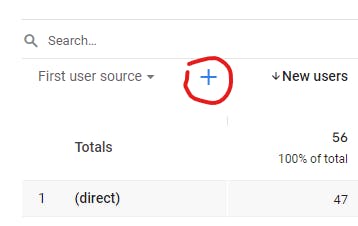Exactly How to Use Secondary Dimension in Google Analytics for Deeper Insights
Exactly How to Use Secondary Dimension in Google Analytics for Deeper Insights
Blog Article
Unlock Deeper Insights With Secondary Dimension in Google Analytics
With the large area of information readily available in Google Analytics, the use of secondary measurements can considerably enrich your analytical capabilities. By purposefully including second dimensions right into your analysis, you can discover useful understandings that could otherwise stay undiscovered - Secondary Dimension in Google Analytics.
Recognizing Primary Vs. Secondary Measurements
When evaluating information in Google Analytics, it is necessary to compare primary and second dimensions to obtain much deeper insights right into customer behavior. Primary dimensions are the major groups through which you can watch your information, such as landing, device, or source/medium web page. These measurements supply the basic structure for arranging and recognizing your data. On the various other hand, additional dimensions allow you to additional explore your main dimension information. By including a secondary measurement, you can layer on extra information to your main dimension, making it possible for a more granular analysis. For example, if your key measurement is the source/medium through which individuals showed up on your site, adding an additional dimension like geographical area can disclose where those users lie geographically. This added layer of details can aid you recognize fads, patterns, or anomalies that may not have been obvious when looking at the primary dimension alone. Therefore, leveraging both additional and key dimensions in Google Analytics is essential for thorough data analysis and educated decision-making.
Utilizing Additional Dimensions Effectively
By incorporating additional measurements along with key measurements, marketing experts and experts can dig much deeper right into the specifics of user interactions on their sites. Secondary measurements enable users to section and filter primary dimension information better, supplying a much more thorough sight of individual demographics, actions, and communications.
Additionally, secondary dimensions make it possible for users to compare and contrast various information factors within a single report, assisting in a more thorough evaluation of user habits patterns. By leveraging secondary dimensions successfully, services can uncover surprise insights, enhance their advertising and marketing approaches, and boost the general user experience on their websites.
Discovering Typical Additional Dimension Combinations
To further evaluate customer habits and patterns in Google Analytics, it is useful to explore usual mixes of secondary measurements. Some usual secondary measurement combinations that provide useful insights include analyzing website traffic sources with individual locations to recognize where website site visitors are coming from geographically and just how they found the site. Analyzing user actions metrics with additional dimensions such as demographics or interests can aid in targeting certain target market sections more properly.
Applying Additional Dimension in Custom-made News
Using additional dimensions in custom reports enables for an extra detailed evaluation of information in Google Analytics, boosting the depth of insights gotten. When producing custom reports in Google Analytics, integrating additional dimensions can provide a much more in-depth view of just how various dimensions interact with each various other. This feature makes it possible for individuals to delve deeper right into their data and uncover useful correlations that may not be instantly apparent.
By using second measurements in custom-made reports, individuals can get a better understanding of their web site or app traffic. Combining the main dimension of "source/medium" with the secondary measurement of "landing page" can reveal which touchdown pages are performing finest for traffic coming from specific sources. This insight can assist online over at this website marketers maximize their campaigns and improve general conversion prices.

Enhancing Information Visualization With Secondary Measurement
When checking out data in Google Analytics custom records, including additional dimensions not only supplies a much more thorough analysis however additionally improves the visual depiction of understandings with data visualization. By adding a second dimension to your reports, you can enrich the means data exists, making it much easier to identify patterns, patterns, and correlations within your site's performance metrics.
Secondary measurements can assist you sector your information further, enabling a much deeper understanding of individual actions and communications on your website. When trying to isolate certain variables that might impact your website's performance., this enhanced degree of granularity can be particularly helpful.
Final Thought
To conclude, leveraging second measurements in Google Analytics enables for a much more detailed evaluation of information, resulting in much deeper understandings and even more informed decision-making. Secondary Dimension in Google Analytics. By adding extra layers of details to key information collections, marketing experts and experts can uncover concealed patterns, patterns, and correlations that supply a granular view of user habits and communications. This boosted level of insight makes it possible for optimization of projects and customized strategies for certain target market segments, inevitably boosting performance and conversion prices
On the other hand, second measurements enable you to further dissect your main dimension data. By including YOURURL.com an additional dimension, you can layer on extra information to your key dimension, enabling a more granular evaluation. If your primary measurement is the source/medium through which customers showed up on your website, including an additional measurement like geographical area can reveal where those users are situated geographically. By integrating second dimensions alongside main dimensions, marketing professionals and analysts can dive much deeper into the specifics of user communications on their sites. Secondary dimensions allow individuals to sector and filter main dimension data better, providing an extra detailed view of user demographics, interactions, and behaviors.
Report this page